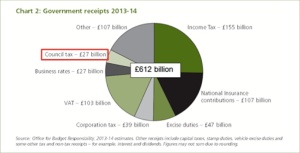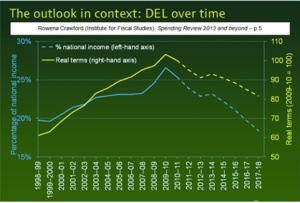Chris Game
One consequence of Theresa May delaying until mid-April her U-turn on holding a General Election was seen almost immediately – when it was decreed too late for the General, local and mayoral elections all to take place synchronously. It could have saved money and probably doubled the local and mayoral turnouts. Which in turn would almost certainly have avoided the unfortunate situations in the West Midlands and Liverpool City Region, where the new metro mayors, Andy Street and Steve Rotheram, were elected with vote mandates – 239,000 and 171,000 respectively – significantly smaller than were achieved in May last year by their respective Police and Crime Commissioners.
Another consequence of the May delay is that, with the parties’ General Election manifestos published almost immediately after the local elections, we heard – even before ‘security’ issues captured the campaign – less directly about local government than we might normally have done. Until now, that is – for I’ve prepared a micro version of the Local Government Election Manifesto Quiz that I’d previously have endeavoured to inflict on my captive undergrads. It’s based on the local government sections of the Conservative, Labour, Liberal Democrat and Green party manifestos – with links and page references for the exceptionally keen or doubtful.
Which manifesto do you reckon (or recall):
- mentions “local government” just twice in 84 pages (pp. 32, 81)?
- proposes (p.103) creating a Minister for England in the Department for Communities and Local Government?
- will introduce (p.27) a ‘presumption of devolution’, whereby devolved powers transferred from the EU post-Brexit will go straight to the relevant region or nation?
- wants (p.94) ‘devolution on demand’, enabling devolution of Westminster powers to groups of councils working together – like a Cornish Assembly or Yorkshire Parliament – with or without a mayor?
- would (p.74) replace Police and Crime Commissioners with accountable police boards of local councillors?
- will encourage councils to economise by painting yellow lines where you can park?
- wants (p.17) more empty homes brought back into use, and a trial of a Land Value Tax (LVT) to encourage the use of vacant land and reduce speculation?
The answers, apart from the Monster Raving Loony Party’s yellow paint one – just to check you were paying attention – are in the order the parties were listed above: C, L, L, LD, LD, G. Points for correct answers, none for incorrect – except the last one, for which you can award yourself points for either Labour (p.86) or the Lib Dems (p.40), as well as the Greens.
Which is one of several noteworthy things about this relatively sudden cross-party interest in land value taxation. First, it was indeed mentioned by all three parties, and in almost identically vague terms. The Greens’ “trial” was the strongest commitment – appropriately, with their Co-Leader Caroline Lucas being probably the tax’s most prominent recent parliamentary advocate. The Lib Dems would merely “consider” it, while for Labour it’s one possible “new option” in an overall review of local government funding. In no manifesto – including, I emphasise, Labour’s – is it a policy, plan, pledge or commitment. None give it more than a part-sentence, and there’s not a figure or any other detail in sight.
Which might explain why, when the respective manifestos appeared, it received effectively no media attention whatever. Until last week, when Conservative campaign headquarters was presumably tasked with fabricating something to counter the damage done by Labour turning Theresa May’s social care charge into a ‘dementia tax’. Accordingly, the nerdish-sounding LVT was frankensteined into a culture-threatening – sorry: Marxist, culture-threatening – ‘Garden Tax’ aimed at undermining the foundations of English family life as we know it. The inaptly-named ‘red-top’ Conservative-supporting tabloids were accordingly briefed and unleashed.
“Labour’s secret plans, hidden in the small print of Jeremy Corbyn’s manifesto”, contain “proposals to replace council tax and business rates” with “a destructive, devastating tax on homes and gardens that a Tory analysis estimates would result in a yearly tax bill of £3,837 for an average family home in England – a massive 224 per cent increase on the current average bill – send house prices plummeting, and plunge mortgage holders into negative equity.” Since when there have been daily updates in the same vein, with even Philip Hammond, in possibly his final days as Chancellor, accusing Labour of a “Marxist tax grab”.
There’s a minor irony here. The principle of land value taxation – the recognition that land’s true ‘location’ value derives less from the actions of the individual owner than from the wider efforts of the community in creating transport links, schools, hospitals and other infrastructure, and the community should benefit from this ‘unearned betterment’ part of the value accordingly – does indeed have history. Far from an invention of Corbyn’s Labour Party, it dates back well beyond Marx to at least the 18th Century classical economists, Adam Smith and David Ricardo: hardly proto-Marxists. Indeed, the bearded one himself dismissed it as a distraction from the historically inevitable transition from capitalism to communism.
Others, however, have supported it, and even enthused, seeing its combination of economic efficiency and progressiveness (the wealthiest paying most) as close to a ‘perfect tax’ – which even I, as an economic illiterate, can see is somewhat overegging it. Even so, its signed-up supporters make an impressive list, including the then Liberal, Winston Churchill; economics textbook king, Paul Samuelson; Mrs Thatcher’s favourite economist, Milton Friedman; the Adam Smith Institute, and the Institute for Fiscal Studies. The truth is that any future review of local finance would be more criticisable for omitting LVT than for including it.

Chris Game is a Visiting Lecturer at INLOGOV interested in the politics of local government; local elections, electoral reform and other electoral behaviour; party politics; political leadership and management; member-officer relations; central-local relations; use of consumer and opinion research in local government; the modernisation agenda and the implementation of executive local government.



